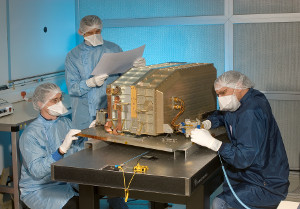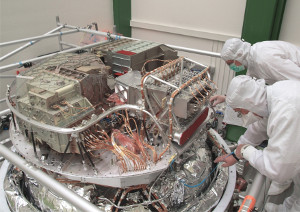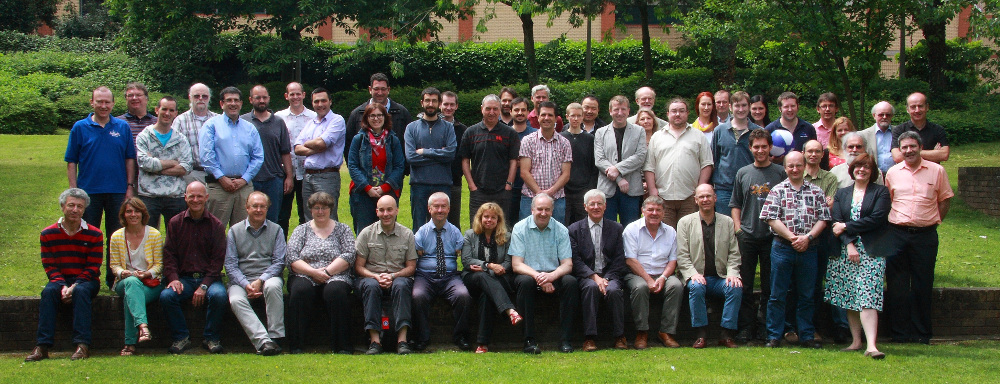
The Royal Astronomy Society (RAS) has awarded its 2014 Group Achievement Award to the team behind the Herschel Space Observatory’s SPIRE instrument.
The award represents recognition by the astronomical community of the outstanding success of the SPIRE instrument, which observed the Universe at far infrared wavelengths, a few hundred times longer than the wavelengths of visible light. The international team was responsible for the design, construction and delivery of the instrument as part of the instrument suite for ESA’s Herschel Space Observatory.
The Herschel satellite was launched in 2009 and operated very successfully for four years. By virtue of its unparalleled sensitivity and unique capabilities, the results obtained using SPIRE have been felt across a broad swath of astrophysics and in particular in detailed studies of star formation in the local Universe and extending out to very distant objects.
“SPIRE has been a truly international endeavour, with 18 institutes in eight countries participating, and countless talented people with wide ranging expertise contributing to building and operating the instrument,” explained Professor Matt Griffin, from Cardiff University, who led the international SPIRE team. “This Group Achievement award for is a fitting tribute to the success of their efforts”.
The three Herschel instruments being integrated with the satellite before launch. SPIRE is at the back, PACS front-left and HIFI front-right. Image credit: ESA

“The work of the SPIRE team has led to a great scientific legacy,” says Laurent Vigroux, from the Institut d’astrophysique de Paris (IAP) and SPIRE Co-Principal Investigator. “For example, SPIRE’s observations of star formation in thin filaments is a major breakthrough that has transformed the field and led to a new theory of star formation”.
Professor David Southwood, President of the Royal Astronomical Society, congratulated the winners. “For nearly two centuries the RAS has supported the work of astronomers and geophysicists in the UK and around the world. It gives me the greatest pleasure to announce the winners of our medals and awards for 2014, recognising the extraordinarily talented men and women who reach the highest levels of achievement in our field”.
“Congratulations to the entire SPIRE team for their achievements over the years of conceiving, building, testing, and operating the SPIRE instrument as well as enabling the exploitation of its data which has led to stunning science,” added Göran Pilbratt, the ESA Project Scientist overseeing the entire Herschel mission. “The RAS award is truly fitting and well deserved! It is great to see the success of Herschel being recognised in this way!”

The RAS award honours individuals who have made an outstanding contribution to astronomy and will be presented at the 2014 National Astronomy Meeting (NAM 2014) to be held in Portsmouth in June.
For more information, please visit the Royal Astronomical Society website.
